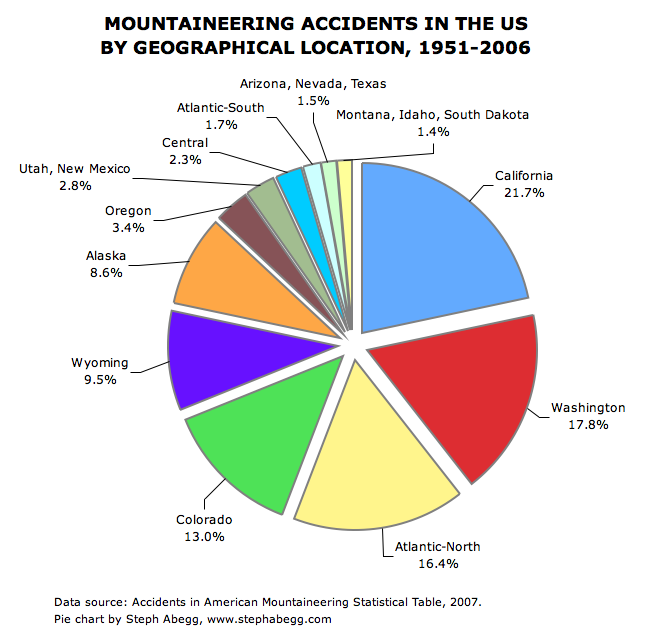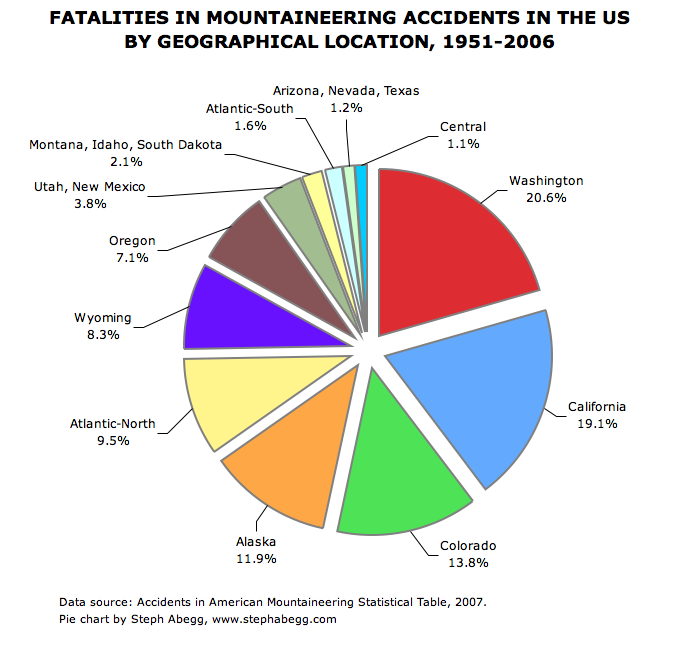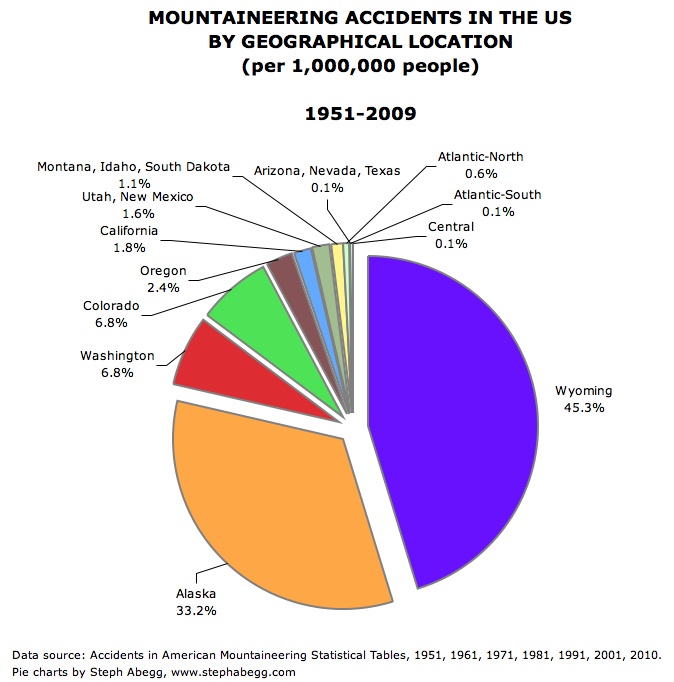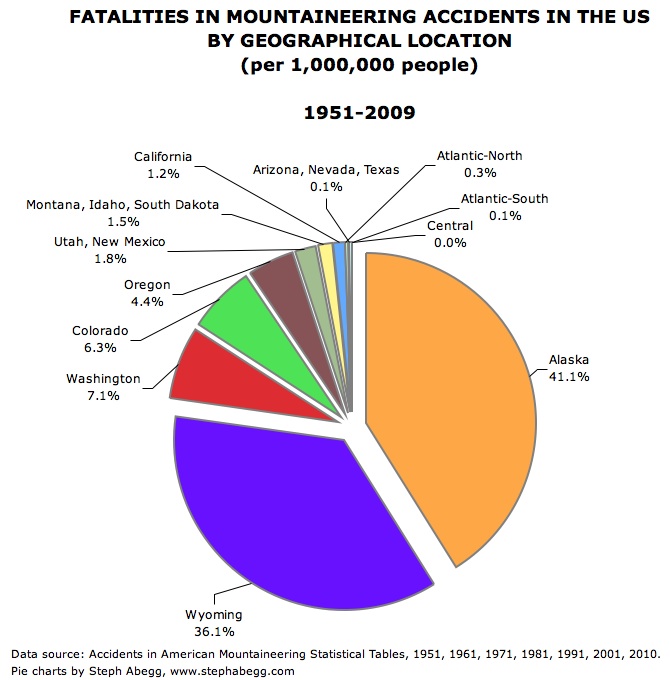The American Alpine Club annually publishes Accidents in American Mountaineering, which contains reports from various mountaineering accidents that occurred that year. The journal also includes statistical tables which summarize the number of mountaineering accidents, injuries, and fatalities, as well as interesting specifics such as terrain, immediate and contributing causes, ages and experience levels of individuals, month of year, type of injury, and location. I was fascinated by these statistical tables, but found the data hard to visualize. So, I spent a day creating pie charts and graphs from the 2007 Statistical Tables, which contain statistics on mountaineering accidents from 1951-2006 (click this link to
see the raw data for the tables, which were the most recent I could find on the AAC website). The following page gives my graphical output of the statistical tables. I also draw a few inferences from the data.
Keep in mind that statistical studies involve some degree of personal interpretation/presentation, simplification of scenarios, and biased data, so all of my deductions should be taken with a grain of salt. Also keep in mind that a percentage of mountaineering accidents are never reported. Inherent to nearly all statistical data, the "missing data" issue tends to make absolute values a bit too low, but has little effect on percentages or relative comparisons.
My overall conclusion: For your best chances at experiencing a mountaineering accident, try climbing unroped or above your abilities on rocky terrain sometime between May-Sept in California or Washington.





